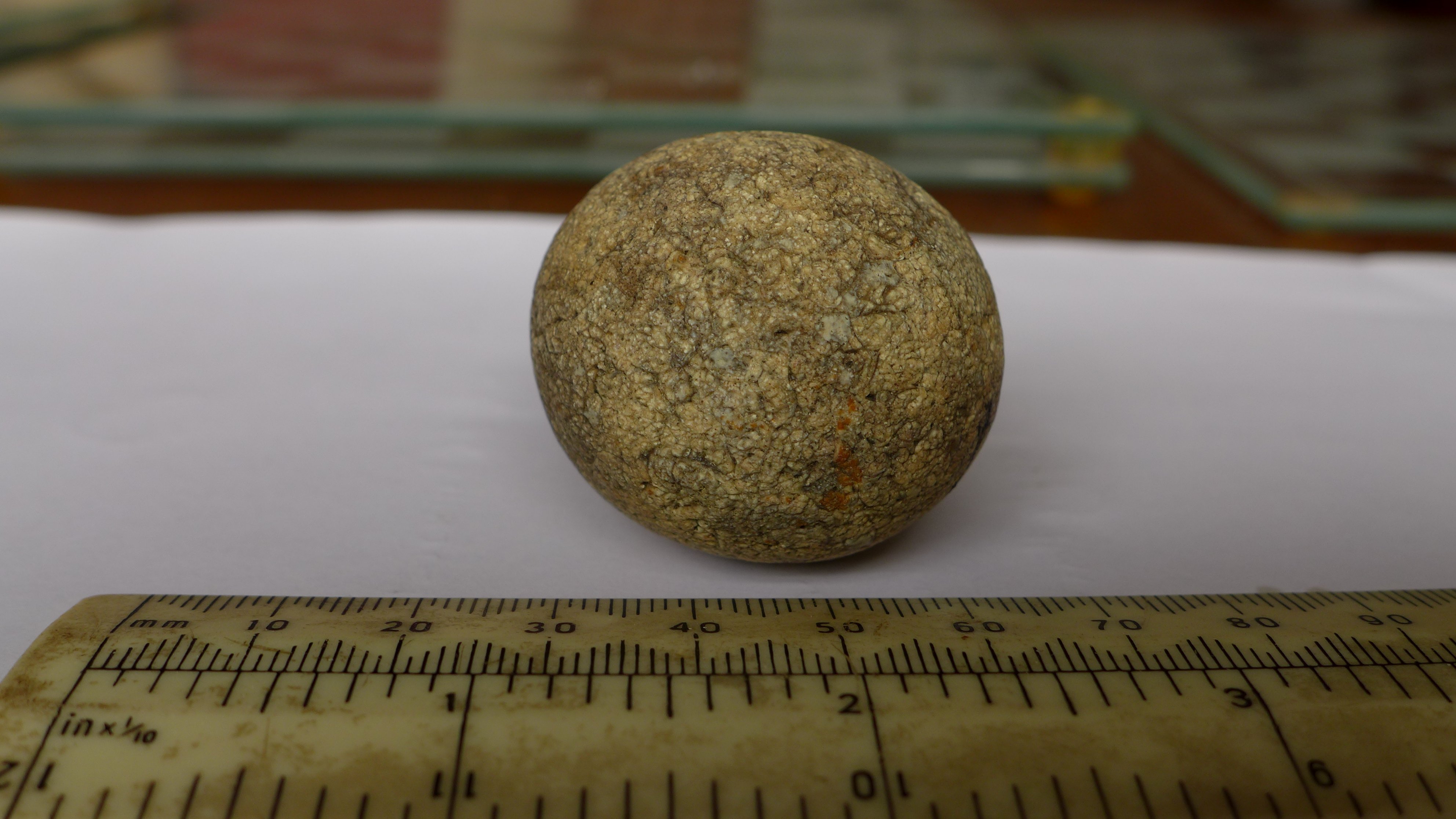This Forum will close on Wednesday 27 March, 2024. Please refer to the announcement on the Discussions page for further detail.
Any geologists out there?
 Pete.8
Posts: 11,340
Pete.8
Posts: 11,340
I was battling to remove a big pyracantha at the weekend and having created a big hole nearly 2ft deep a stone fell in then rolled around which caught my eye.
It's not perfectly round, but almost, about the size of a golf ball and weighs 66g
I've not seen something similar before and I was just curious as to how it may have formed and ended-up in my garden.
Any ideas?

Billericay - Essex
Knowledge is knowing that a tomato is a fruit.
Wisdom is not putting it in a fruit salad.
0
Posts
It's a flint ball or nodule - not common but not that uncommon either. During his life as a farmer in Suffolk Pa turned several up while cultivating fields etc. We had a row of them on an oak beam in the farmhouse.
Gardening in Central Norfolk on improved gritty moraine over chalk ... free-draining.
Thanks Dove - I'll not wait to see if a T-Rex hatches then
I'll pop it in the fish tank along with several other interesting stones I've come across over the years
Billericay - Essex
Knowledge is knowing that a tomato is a fruit.
Wisdom is not putting it in a fruit salad.
Watch the fish trying to play fin-ball with it
Gardening in Central Norfolk on improved gritty moraine over chalk ... free-draining.
Dove, you are a mine of useful information, so glad you generously share with us.
Are they what the flint knappers open up to build those lovely Norfolk houses?
In the sticks near Peterborough
Esspee Have been around a while now and have always had 'satiable curtiosity coupled with a good memory ... so far!
Have been around a while now and have always had 'satiable curtiosity coupled with a good memory ... so far! 
Last edited: 10 November 2016 14:26:34
Gardening in Central Norfolk on improved gritty moraine over chalk ... free-draining.
Nut - I think those very regular dressed flints are mainly flint pebbles from beaches, split in half.
Gardening in Central Norfolk on improved gritty moraine over chalk ... free-draining.
In the sticks near Peterborough
Sling shot or muscket balls, lead or iron was expensive stone could be shaped and would knock over a rabbit or even a man, my Father could bring down a rabbit with a heavy catapult using stone shot, tasted better too no lead.
Frank.
These stones aren't shaped Frank - they are black flint inside with an even layer of hard white stone a few millimetres thick surrounding it - they are naturally formed and as I've said are not uncommon in East Anglia where we have heavy clay and chalk with flint deposits. The OP is in Essex - part of East Anglia
http://www.archaeologyuk.org/ba/ba72/feat2.shtml
You can't shape flint into spheres - it has to be knapped by striking off flakes 'along the grain'
https://www.youtube.com/watch?v=lM_Zg4dC-vU
Last edited: 10 November 2016 15:04:00
Gardening in Central Norfolk on improved gritty moraine over chalk ... free-draining.